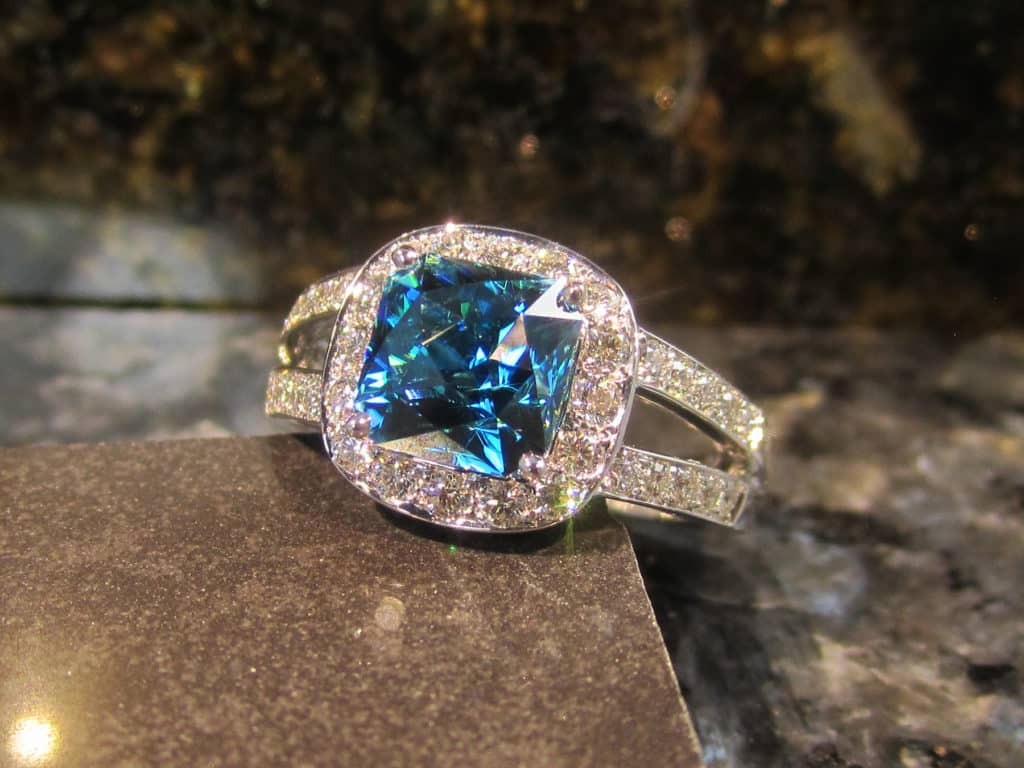By Danielle Barber, Suna Bros.
I’ve got a bad case of the winter blues.
December heralds shorter days and longer nights. There’s a chill in the air and frost underfoot as planet Earth tilts on its axis while twirling around the sun. But my kind of winter blues refers to two frosty-hued gemstones: blue zircon and tanzanite.
December babies, celebrate! The last month on the calendar offers the largest birthstone selection, all of which happen to be in my favorite color…blue.
Zircon offers an unexpected palette of cherry, amber, golden, green, and clear gems, but its electric blue is the most popular by far. For a gem that’s been around over four BILLION years, zircon is still a big mystery to many. The zircon/zirconia names are befuddling, inferring that zircons are imitations, like lab-grown cubic zirconia.
Further complicating matters is that colorless zircon resembles diamond more than any other natural gem and has been widely used as a substitute for diamond. But zircon is as gorgeous as it is natural.
Zircon is the stealthiest of charmers. You may not know what it is, but once you see it, it’s got you, hook, line, and sinker. Though not as well-known as other gems, zircons are hardly wallflowers. Even in the dimmest, most remote corner of a showcase, all a zircon needs is the teeniest beam of light to explode into full-on spectral brilliance. They just can’t help themselves.
Aside from being one of the heaviest gemstones, zircon has some uber-cool properties that make it a gem extraordinaire. Its supernova brilliance is due to a high refractive index, greater than sapphire, ruby, or spinel. It’s fiery like diamond and one of only a few gems that show visible dispersion, the flashing rainbow colors when it’s moved around in the light.
In fact, its dispersion is almost as high as diamond. Another trick in zircon’s magic show is birefringence. This optical phenomenon, known as double refraction, is best observed in a zircon. A single ray of light is split into two rays, hitting the inside of the pavilion facets and doubling them like a hall of mirrors effect.
Our next blue gem has been around for a little over 50 years, barely a blip by gem standards. It was discovered in East Africa, but there are different versions of the story, such as a Maasai tribesman stumbling upon blue crystals and believing them to be vibrant sapphires. One thing is certain: it was a completely new gem, blue zoisite. In the late 1960s, Tiffany & Co. named it after its birthplace: Tanzanite. A star was born: the world embraced tanzanite.
Tanzanite is said to be rarer than diamonds, found in only one part of the globe, in the Merelani foothills in the shadow of Mt. Kilimanjaro. As with any gem, it is never certain where and when they will occur, but some geologists believe that tanzanite mines may not last for another generation.
Tanzanite’s palette spans from cool lilac and light blue in smaller stones to deep ultramarine in larger. I often find myself describing these gemmy tanzanites as “velvety” because one gets lost in their gorgeous lushness. Tanzanite’s superpower is its pleochroism, which means that its crystals can show three distinct colors—blue, violet, and burgundy—when viewed from different angles.
So, what’s not to love about the blues? The gem kind, that is.
